Ford Puma vs Nissan Leaf – Which one offers the better deal?
Both models have their strengths – but which one suits you more?
Compare performance, efficiency, price and space directly: Ford Puma or Nissan Leaf?
Costs and Efficiency:
Price and efficiency are often the first things buyers look at. Here it becomes clear which model has the long-term edge – whether at the pump, the plug, or in purchase price.
Ford Puma has a distinct advantage in terms of price – it starts at 24800 £, while the Nissan Leaf costs 30800 £. That’s a price difference of around 6000 £.
In terms of energy consumption, the advantage goes to the Ford Puma: with 13.10 kWh per 100 km, it’s distinct more efficient than the Nissan Leaf with 16.70 kWh. That’s a difference of about 3.60 kWh.
As for range, the Nissan Leaf performs minimal better – achieving up to 385 km, about 9 km more than the Ford Puma.
Engine and Performance:
Power, torque and acceleration say a lot about how a car feels on the road. This is where you see which model delivers more driving dynamics.
When it comes to engine power, the Nissan Leaf has a noticeable edge – offering 217 HP compared to 168 HP. That’s roughly 49 HP more horsepower.
In acceleration from 0 to 100 km/h, the Nissan Leaf is barely noticeable quicker – completing the sprint in 6.90 s, while the Ford Puma takes 7.40 s. That’s about 0.50 s faster.
In terms of top speed, the Ford Puma performs noticeable better – reaching 210 km/h, while the Nissan Leaf tops out at 157 km/h. The difference is around 53 km/h.
There’s also a difference in torque: Nissan Leaf pulls to a small extent stronger with 340 Nm compared to 290 Nm. That’s about 50 Nm difference.
Space and Everyday Use:
Whether family car or daily driver – which one offers more room, flexibility and comfort?
Both vehicles offer seating for 5 people.
In curb weight, Ford Puma is distinct lighter – 1316 kg compared to 1580 kg. The difference is around 264 kg.
In terms of boot space, the Ford Puma offers noticeable more room – 523 L compared to 394 L. That’s a difference of about 129 L.
In maximum load capacity, the Ford Puma performs evident better – up to 1283 L, which is about 493 L more than the Nissan Leaf.
When it comes to payload, Ford Puma slightly takes the win – 469 kg compared to 415 kg. That’s a difference of about 54 kg.
Who comes out on top?
Overall, the Ford Puma shows itself to be outperforms in nearly all aspects and secures the title of DriveDuel Champion.
It convinces with the more balanced overall package and proves to be the more versatile choice for everyday use.
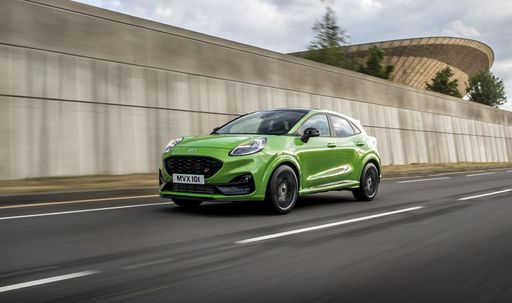 @ Ford Motor Company / Ford Media Center
@ Ford Motor Company / Ford Media Center
Ford Puma
Ford Puma
The Ford Puma is a cheeky compact crossover that blends sporty styling with city-friendly practicality, giving drivers a surprisingly fun and composed ride. With clever storage tricks and a lively personality, it’s a smart pick for buyers who want enjoyment without fuss.
details @ Ford Motor Company / Ford Media Center
@ Ford Motor Company / Ford Media Center
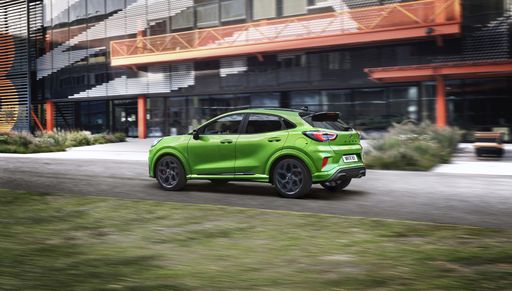 @ Ford Motor Company / Ford Media Center
@ Ford Motor Company / Ford Media Center
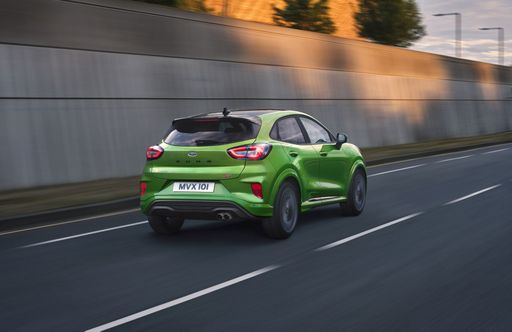 @ Ford Motor Company / Ford Media Center
@ Ford Motor Company / Ford Media Center
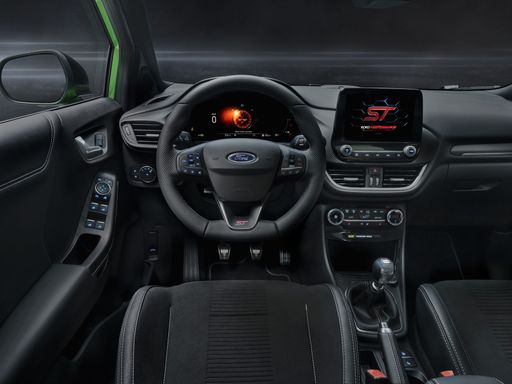 @ Ford Motor Company / Ford Media Center
@ Ford Motor Company / Ford Media Center
Nissan Leaf
The Nissan Leaf stands out as a pioneering model in the realm of electric vehicles, known for its impressive blend of practicality and eco-friendliness. It offers a smooth and quiet driving experience, making it an ideal choice for city commuting and longer journeys alike. The interior design is both comfortable and intuitive, providing drivers with a sense of modernity and ease of use.
details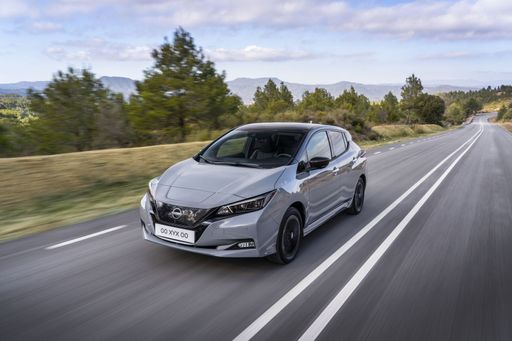 @ Nissan Motor Corporation
@ Nissan Motor Corporation
 @ Nissan Motor Corporation
@ Nissan Motor Corporation
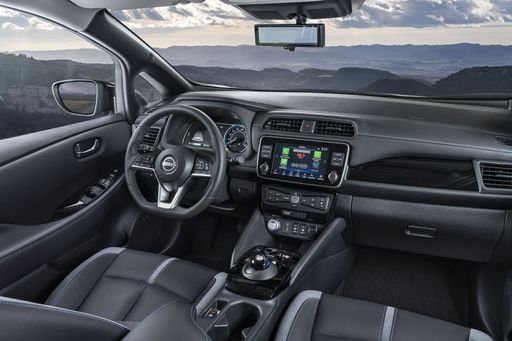 @ Nissan Motor Corporation
@ Nissan Motor Corporation
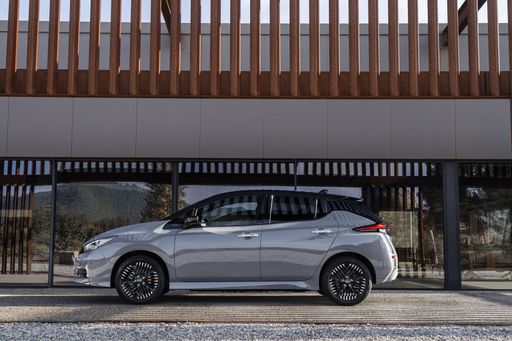 @ Nissan Motor Corporation
@ Nissan Motor Corporation
 @ Ford Motor Company / Ford Media Center
@ Ford Motor Company / Ford Media Center
|
 @ Nissan Motor Corporation
@ Nissan Motor Corporation
|
|
|
|
Costs and Consumption |
|
|---|---|
|
Price
24800 - 36300 £
|
Price
30800 - 37200 £
|
|
Consumption L/100km
5.4 - 5.9 L
|
Consumption L/100km
-
|
|
Consumption kWh/100km
13.1 - 13.9 kWh
|
Consumption kWh/100km
16.7 - 17.8 kWh
|
|
Electric Range
361 - 376 km
|
Electric Range
270 - 385 km
|
|
Battery Capacity
43 kWh
|
Battery Capacity
39 - 59 kWh
|
|
co2
0 - 135 g/km
|
co2
0 g/km
|
|
Fuel tank capacity
42 L
|
Fuel tank capacity
-
|
Dimensions and Body |
|
|---|---|
|
Body Type
SUV
|
Body Type
Hatchback
|
|
Seats
5
|
Seats
5
|
|
Doors
5
|
Doors
5
|
|
Curb weight
1316 - 1563 kg
|
Curb weight
1580 - 1756 kg
|
|
Trunk capacity
456 - 523 L
|
Trunk capacity
385 - 394 L
|
|
Length
4186 - 4226 mm
|
Length
4490 mm
|
|
Width
1805 mm
|
Width
1788 mm
|
|
Height
1550 - 1555 mm
|
Height
1540 - 1545 mm
|
|
Max trunk capacity
1216 - 1283 L
|
Max trunk capacity
790 L
|
|
Payload
367 - 469 kg
|
Payload
384 - 415 kg
|
Engine and Performance |
|
|---|---|
|
Engine Type
Electric, Petrol MHEV
|
Engine Type
Electric
|
|
Transmission
Automatic, Manuel
|
Transmission
Automatic
|
|
Transmission Detail
Reduction Gearbox, Manual Gearbox, Dual-Clutch Automatic
|
Transmission Detail
Reduction Gearbox
|
|
Drive Type
Front-Wheel Drive
|
Drive Type
Front-Wheel Drive
|
|
Power HP
125 - 168 HP
|
Power HP
150 - 217 HP
|
|
Acceleration 0-100km/h
7.4 - 9.8 s
|
Acceleration 0-100km/h
6.9 - 7.9 s
|
|
Max Speed
160 - 210 km/h
|
Max Speed
144 - 157 km/h
|
|
Torque
170 - 290 Nm
|
Torque
320 - 340 Nm
|
|
Number of Cylinders
3
|
Number of Cylinders
-
|
|
Power kW
92 - 124 kW
|
Power kW
110 - 160 kW
|
|
Engine capacity
999 cm3
|
Engine capacity
-
|
General |
|
|---|---|
|
Model Year
2025
|
Model Year
2019
|
|
CO2 Efficiency Class
A, D
|
CO2 Efficiency Class
A
|
|
Brand
Ford
|
Brand
Nissan
|
Is the Ford Puma offered with different drivetrains?
The Ford Puma is offered with Front-Wheel Drive.
The prices and data displayed are estimates based on German list prices and may vary by country. This information is not legally binding.
